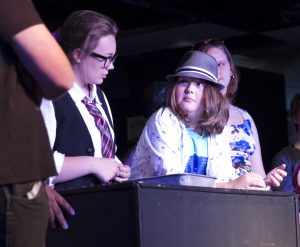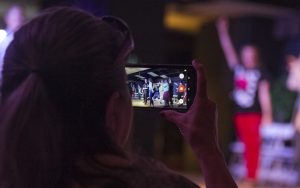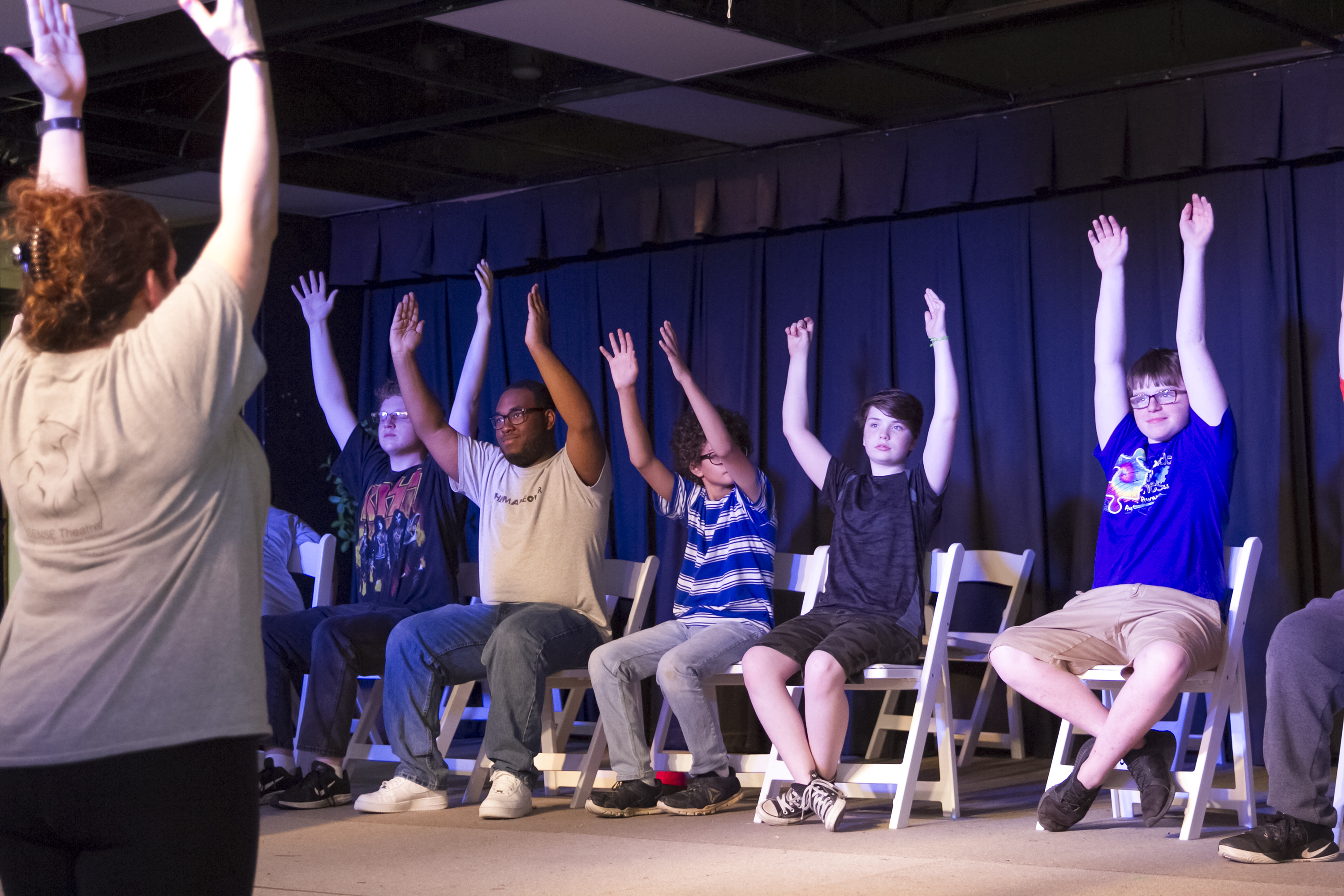Unique ASD intervention yields increased peer interaction, responses to social cues

Thirteen-year-old McKade Zimmerman enjoys creating art but typically shies away from performing in front of crowds. He is “content to do his own thing,” but as a teenager with autism spectrum disorder, social interaction is vital to transitioning to adulthood.
So, while some may be surprised to see Zimmerman on a theater stage, in costume, rapping and flawlessly delivering lines, his mother, Alex, anticipated it; she’d been eagerly watching McKade “come out of his shell” during the last few months of rehearsal.
McKade played a “Slade” in an original script, “The Makeover,” an hour-long play about a teenage girl’s social readjustment to a new school. It featured three songs and lines by participants and their peer mentors.
The performance wrapped the second cohort for SENSE Theatre, a novel ASD intervention that combines peer mediation and theater to address emotional issues in children with ASD.
Despite Alex’s initial skepticism, McKade and his 10-year-old brother, Jacob, enrolled in the program last spring, with McKade randomly assigned to SENSE, and Jacob to Tackling Teenage Training, a program that teaches youth with ASD about psychological, social and sexual development.
The changes in her boys’ habits, behaviors and interactions became more noticeable each day. For instance, McKade was enthusiastic about rehearsals and memorized the names of all cast members.
“Even today, when we got to rehearsal, McKade said to me, ‘come inside and meet all of my friends,’” Alex said. “He’s never done that. The socialization they get here is extremely helpful, and having the mentors has helped McKade come out of his shell.”
Jacob, often opinionated and ultra inquisitive, has become more aware of cultural norms, particularly as it relates to the changes he is experiencing in his body.
“Being a mother of children with autism, I don’t know how to explain a lot of stuff to [Jacob],” Alex said. “So I enjoy him getting to learn things from a third party.”
A packed house

SENSE researchers are halfway through the trial, and early results are promising, said Dr. Susan White, director of UA’s Center for the Prevention of Youth Behavior Problems and site investigator.
White and co-researchers collected data on perceptions, social functioning and peer interactions, as well as Electroencephalogram, or EEG, data. She said participants show greater responsiveness to social cues and increased interaction with peers.
A surprising but important result, White said, is the community’s response. SENSE held its first public performance in October, and about 100 people attended. All seats were full last week, too.
The public’s interest indicates the study’s intended impact of generalization is coming to fruition, in part because SENSE “doesn’t look like research” to most.
“We’ve had a lot of people who have nothing to do with autism come away impressed by the performances of these young people,” White said. “It has a way of influencing, especially for kids, how they look at people with disabilities. Also, our peer mentors are coming back for a third time to do it because they’re getting so much out of it.”
Connecting with one another
Unearthing creativity and discovering one’s talents doesn’t happen easily, especially if one faces a social barrier. For Alikah Hartley, a rising junior at Brookwood High School who completed her second stint as a peer mentor, helping introduce others to their first experiences in theater was an easy sell, though she’d never worked with anyone with ASD.
Themes of “adolescent strife” and identity development are intentionally included in the original scripts for each play, and each rehearsal and performance reflects that, Hartley said.
“It comes back to being important for everybody to be able to stand and talk and be on stage and tell those stories,” Hartley said. “The students with ASD get involved and want to be involved just as much as everyone else there.”
Hartley is encouraged by the program’s inclusiveness and is interested in the potential of using performing arts in an educational capacity. It’s important, as she discovered early, to not carry the burden of teaching about autism, but about everyone “enjoying similar things.”
“They came in with their knowledge of who they were,” Hartley said. “It wasn’t about that for them, as much as it was experiencing theater.”
